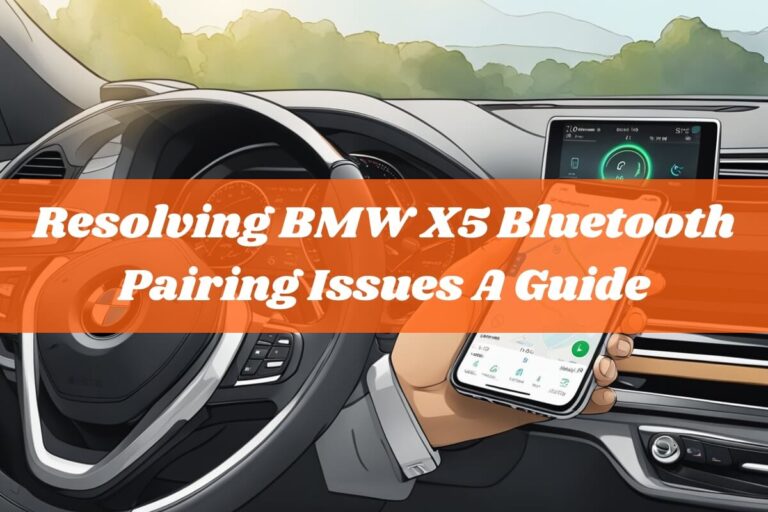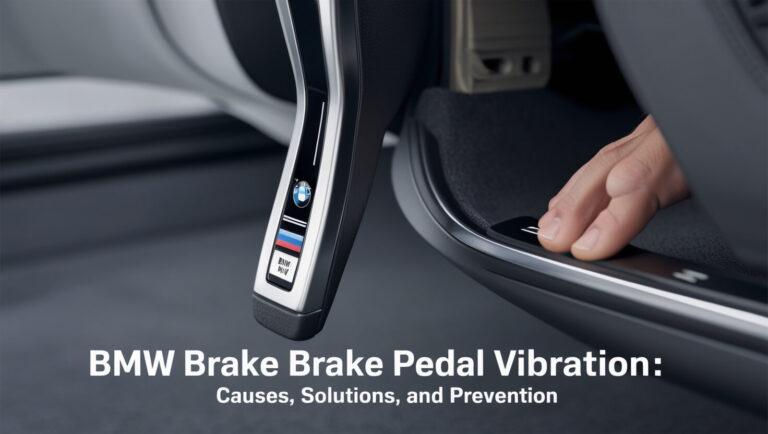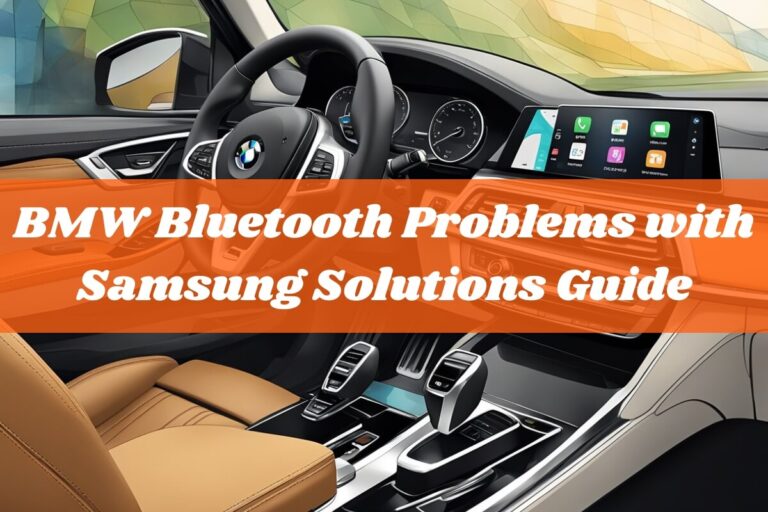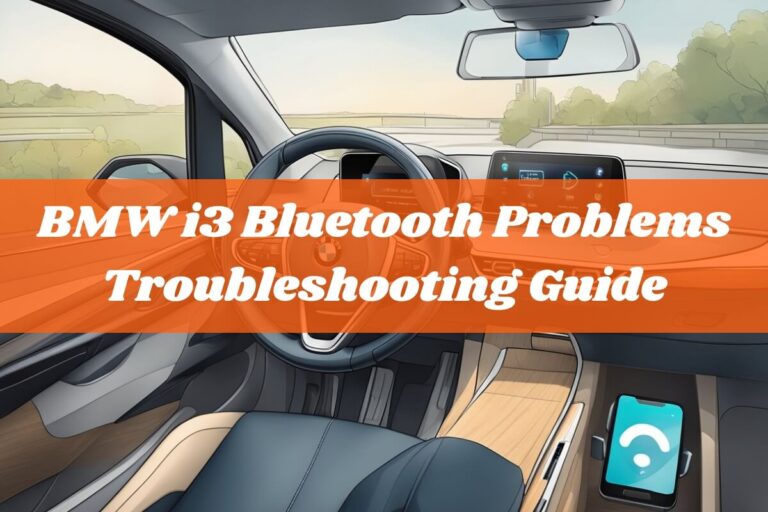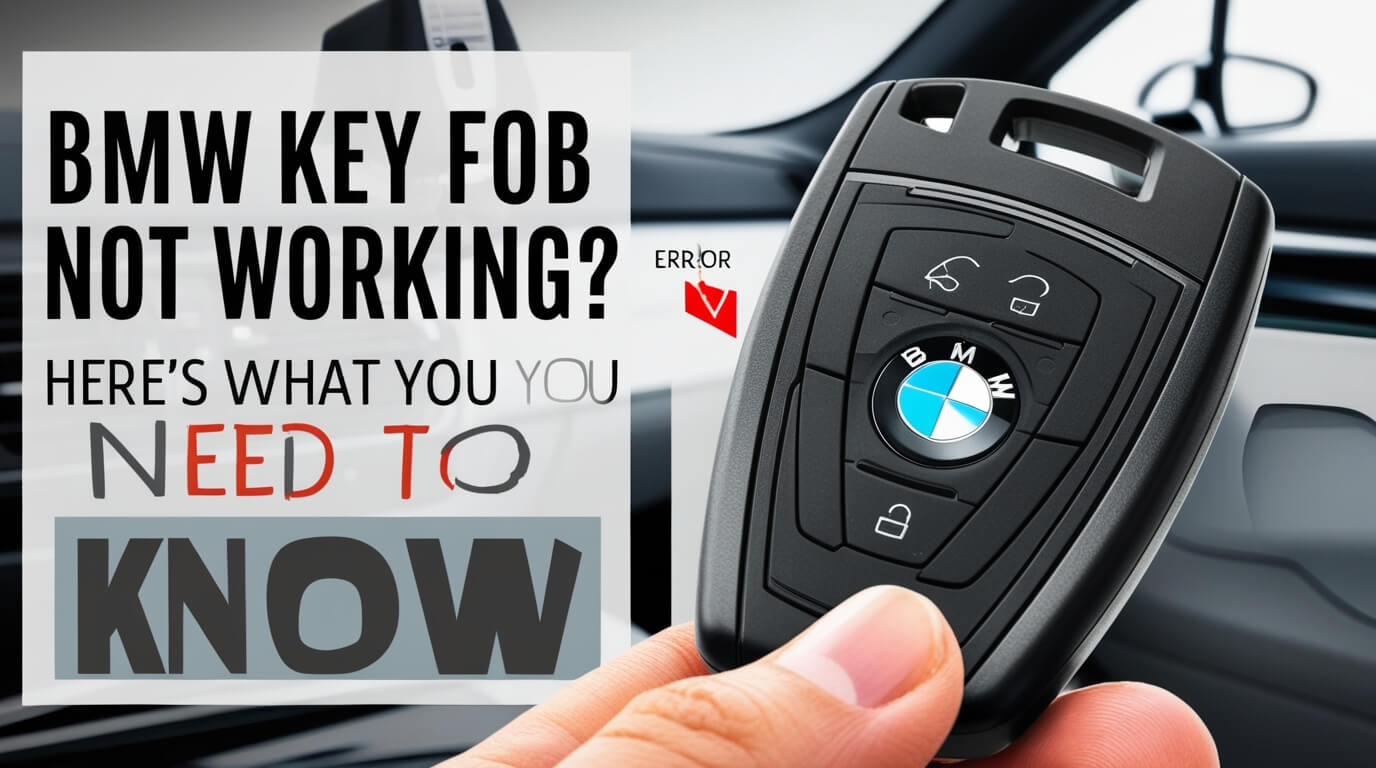
Are you standing in front of your BMW, frustrated because your key fob isn’t working? You’re not alone. Many BMW owners face key fob issues, but most problems have simple solutions. In this guide, we’ll explore why your BMW key fob might stop working and how to fix it.
BMW key fobs are more than just convenient gadgets. They’re your primary connection to your vehicle, controlling everything from door locks to engine start. When they fail, it can leave you feeling stranded and stressed. But don’t worry – we’ve got you covered.
Let’s dive into the world of BMW key fobs and uncover the secrets to keeping them in top shape. Whether you’re dealing with a dead battery or a more complex issue, you’ll find the answers you need right here.
Common Reasons for BMW Key Fob Failure
BMW key fobs are tough, but they’re not invincible. Several factors can cause them to stop working. Let’s look at the most common culprits:
Dead or Low Battery
The simplest and most common reason for a key fob failure is a dead or dying battery. Key fob batteries typically last 3-4 years, but this can vary based on usage and environmental factors.
Signs of a low battery include:
- Reduced range when locking or unlocking your BMW
- Need to press buttons multiple times for a response
- Inconsistent operation of key fob functions
If your key fob worked fine yesterday but seems dead today, a drained battery is likely the cause.
Physical Damage to the Key Fob
BMW key fobs are built to withstand daily use, but they’re not indestructible. Dropping your key fob, exposing it to water, or subjecting it to extreme temperatures can cause damage.
Look for these signs of physical damage:
- Cracks or chips in the key fob casing
- Loose or unresponsive buttons
- Visible water damage or corrosion inside the fob
Even minor damage can interfere with your key fob’s ability to communicate with your BMW.
Faulty Key Fob Buttons
Over time, the buttons on your BMW key fob can wear out. This is especially true for frequently used buttons like lock and unlock.
You might notice:
- Buttons feeling “mushy” or unresponsive
- Need to press harder for the button to work
- Intermittent operation of certain functions
Worn-out buttons can make your key fob unreliable or completely non-functional.
Desynchronization with the Vehicle
Your BMW key fob and car need to be in sync to communicate properly. Various factors can cause them to fall out of sync, including:
- Interference from other electronic devices
- Software glitches in the car’s computer system
- Prolonged periods without using the key fob
When desynchronized, your key fob might work intermittently or not at all.
Issues with the Car’s Electrical System
Sometimes, the problem isn’t with the key fob at all. Your BMW’s electrical system plays a crucial role in communicating with the key fob.
Potential car-side issues include:
- Dead car battery
- Faulty door lock actuators
- Problems with the car’s central locking system
- Malfunctioning key fob receiver in the car
These issues can mimic key fob problems, making diagnosis tricky.
Troubleshooting Your BMW Key Fob
Now that we know what can go wrong, let’s explore how to fix it. Here are step-by-step troubleshooting methods to get your BMW key fob working again:
Checking and Replacing the Battery
First, let’s tackle the most common issue – a dead battery.
- Locate the battery compartment on your key fob. This is usually on the back or side.
- Open the compartment using a small flathead screwdriver or the release mechanism.
- Note the battery type (usually CR2032) and orientation.
- Remove the old battery and insert a new one, ensuring correct polarity.
- Close the compartment and test the key fob.
If this solves the problem, great! If not, move on to the next steps.
Inspecting for Physical Damage
Carefully examine your key fob for signs of damage:
- Look for cracks, chips, or separation in the casing.
- Check if all buttons are intact and properly aligned.
- Open the key fob and look for signs of water damage or corrosion.
If you spot significant damage, you might need to replace the key fob.
Testing Individual Key Fob Functions
Test each button on your key fob separately:
- Stand close to your BMW.
- Press each button one at a time, noting which functions work.
- Try the buttons again from further away to test range.
This can help identify if the problem is with a specific function or the entire fob.
Resynchronizing Your Key Fob
If your key fob seems to be out of sync with your BMW, try this:
- Get into your car with all doors closed.
- Insert the key fob into the ignition (or place it in the key slot for push-button start models).
- Turn the ignition to the “on” position without starting the engine.
- Press any button on the key fob.
- Turn the ignition off and remove the key fob.
This process often reestablishes the connection between your key fob and car.
Examining the Car’s Electrical Components
If the problem persists, it’s time to look at your BMW’s electrical system:
- Check if your car’s battery is charged and functioning.
- Look for blown fuses related to the central locking system.
- Test if the door lock actuators are working properly.
- Ensure the car’s antenna for the key fob signal isn’t damaged or obstructed.
If you’re not comfortable with these checks, it’s best to consult a professional.
DIY Solutions for BMW Key Fob Problems
For the hands-on BMW owners out there, here are some DIY fixes you can try:
Step-by-Step Battery Replacement Guide
Replacing your key fob battery is a simple task:
- Gather materials: new CR2032 battery, small flathead screwdriver.
- Locate the seam in your key fob and gently pry it open.
- Remove the old battery, noting its orientation.
- Insert the new battery in the same orientation.
- Snap the key fob back together and test.
Remember, always dispose of old batteries properly!
How to Resync Your BMW Key Fob at Home
If your key fob is out of sync, try this method:
- Enter your BMW and close all doors.
- Press and hold the unlock button on your key fob.
- While holding the button, press the BMW logo button three times.
- Release the unlock button – you should hear the doors lock and unlock.
This process often resyncs your key fob with your BMW’s system.
Cleaning Key Fob Contacts and Buttons
Over time, dirt and grime can affect your key fob’s performance:
- Open your key fob carefully.
- Use a cotton swab dipped in rubbing alcohol to clean the circuit board and button contacts.
- Allow to dry completely before reassembling.
This can improve button responsiveness and overall function.
Using the Emergency Key as a Temporary Solution
If all else fails, remember your BMW key fob contains an emergency key:
- Look for a small release button or switch on your key fob.
- Press it to release the hidden emergency key.
- Use this key to manually unlock your BMW’s driver’s door.
While not as convenient, this ensures you’re never locked out of your car.
When to Seek Professional Help
Sometimes, DIY solutions aren’t enough. Here’s when to call in the experts:
Signs That Indicate a More Serious Issue
Consider professional help if:
- Multiple key fobs aren’t working
- You’ve tried all DIY solutions without success
- There are signs of internal damage to the key fob
- Your BMW’s electrical system seems to be the culprit
These could indicate more complex issues beyond simple troubleshooting.
Finding a Reliable BMW Specialist
When seeking professional help:
- Start with your local BMW dealership – they have specialized knowledge and tools.
- Look for independent BMW specialists with good reviews and certifications.
- Ask fellow BMW owners for recommendations.
Choose a specialist you trust to handle your valuable key fob and car.
What to Expect During a Professional Diagnosis
A professional diagnosis typically involves:
- Electronic scanning of your BMW’s systems
- Testing the key fob’s signal strength and functionality
- Checking the car’s key fob receiver and related components
- Possible reprogramming of the key fob or car’s systems
Expect to pay for diagnostic time, even if the fix turns out to be simple.
Preventing Future BMW Key Fob Issues
An ounce of prevention is worth a pound of cure. Here’s how to avoid future key fob headaches:
Regular Maintenance Tips
- Replace the battery every 3-4 years, even if it’s still working.
- Keep your key fob clean and dry.
- Avoid exposing it to extreme temperatures.
- Regularly check for signs of wear or damage.
A little care goes a long way in extending your key fob’s life.
Proper Handling and Storage of Your Key Fob
- Don’t attach heavy keychains that can strain the fob.
- Avoid dropping your key fob or subjecting it to impacts.
- Store spare key fobs in a cool, dry place away from electronic interference.
- Don’t leave your key fob in direct sunlight or extremely cold conditions.
Treat your key fob like the sophisticated piece of technology it is.
Keeping Spare Keys and Batteries on Hand
- Always keep a spare key fob in a safe place.
- Stock up on CR2032 batteries – they’re inexpensive and have a long shelf life.
- Consider keeping a small toolkit for key fob maintenance.
Being prepared can save you from future inconvenience.
Understanding BMW Key Fob Technology
Knowledge is power. Understanding how your key fob works can help you use and maintain it better.
How BMW Key Fobs Work
BMW key fobs use radio frequency (RF) technology to communicate with your car:
- When you press a button, the key fob sends an encrypted RF signal.
- Your BMW receives this signal and decodes it.
- If the signal matches, the car performs the requested action.
This process happens in a fraction of a second, making it seem instantaneous.
Evolution of BMW Key Fob Features
BMW key fobs have come a long way:
- Early models were simple remote controls for locking and unlocking.
- Later versions added trunk release and panic alarm functions.
- Modern fobs include keyless entry and push-button start capabilities.
- The latest models even have displays and can perform remote parking.
Each generation brings new features and improved security.
Compatibility Issues with Older BMW Models
As technology advances, compatibility can become an issue:
- Newer key fobs may not work with older BMW models.
- Some features on modern fobs may not function on older cars.
- Replacement options for very old models might be limited.
Always check compatibility when replacing or upgrading your key fob.
Frequently Asked Questions About BMW Key Fob Problems
Let’s address some common questions BMW owners ask about key fob issues:
Can I Drive My BMW If the Key Fob Isn’t Working?
Yes, you can still drive your BMW with a non-functioning key fob, but it requires some extra steps:
- Use the emergency key hidden in your fob to unlock the door manually.
- For models with a key slot, insert the fob and start the car normally.
- For push-button start models, hold the key fob against the designated spot on the steering column (usually marked with a key symbol) and press the start button.
While not ideal, these methods ensure you’re not stranded if your key fob fails.
How Much Does It Cost to Replace a BMW Key Fob?
Replacing a BMW key fob can be pricey:
- Basic key fob replacement: $200 – $300
- Advanced key fobs with display: $300 – $500
- Programming fees: $50 – $100
Prices vary based on your BMW model and the complexity of the key fob. Always get a quote from your dealer or a reputable specialist before proceeding.
Are There Any Recalls Related to BMW Key Fob Issues?
While rare, there have been recalls related to BMW key fobs:
- In 2017, BMW recalled certain models due to a potential loss of electrical power that could affect key fob functionality.
- Some older models had recalls for key fob signal interference issues.
Always check with BMW or the National Highway Traffic Safety Administration (NHTSA) for the latest recall information specific to your model.
Conclusion: Keeping Your BMW Key Fob in Top Shape
Your BMW key fob is more than just a convenience – it’s an essential part of your driving experience. By understanding common issues, knowing how to troubleshoot, and practicing good maintenance, you can ensure your key fob remains reliable for years to come.
Remember, most BMW key fob problems have simple solutions. Whether it’s a battery replacement, a quick resync, or a thorough cleaning, you’re often just a few steps away from resolving the issue. And when in doubt, don’t hesitate to seek professional help.
Take care of your BMW key fob, and it will take care of you, ensuring smooth, hassle-free access to your ultimate driving machine every time you’re ready to hit the road.

